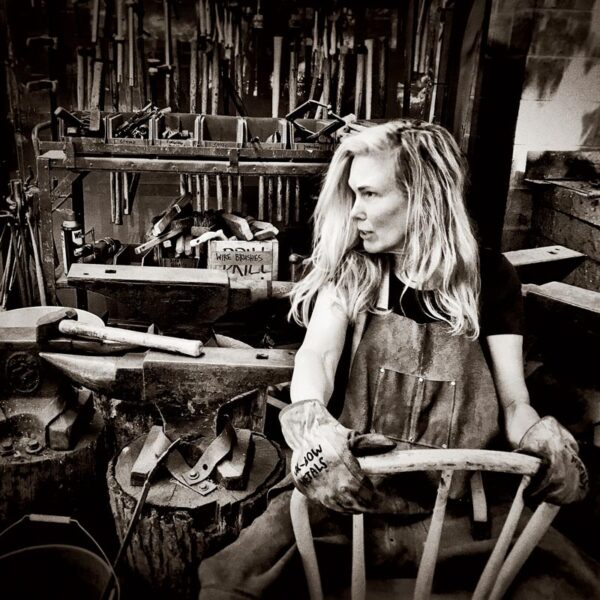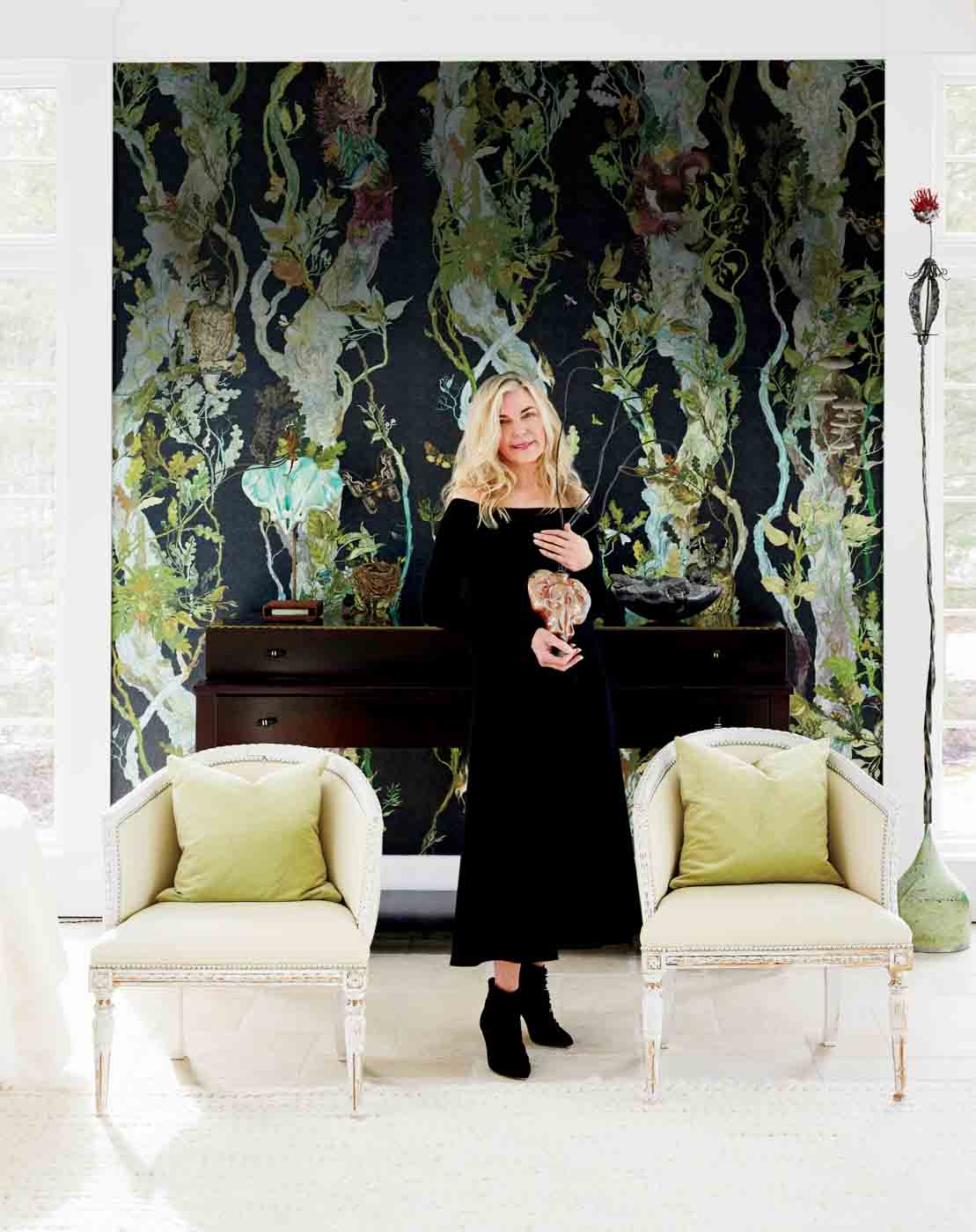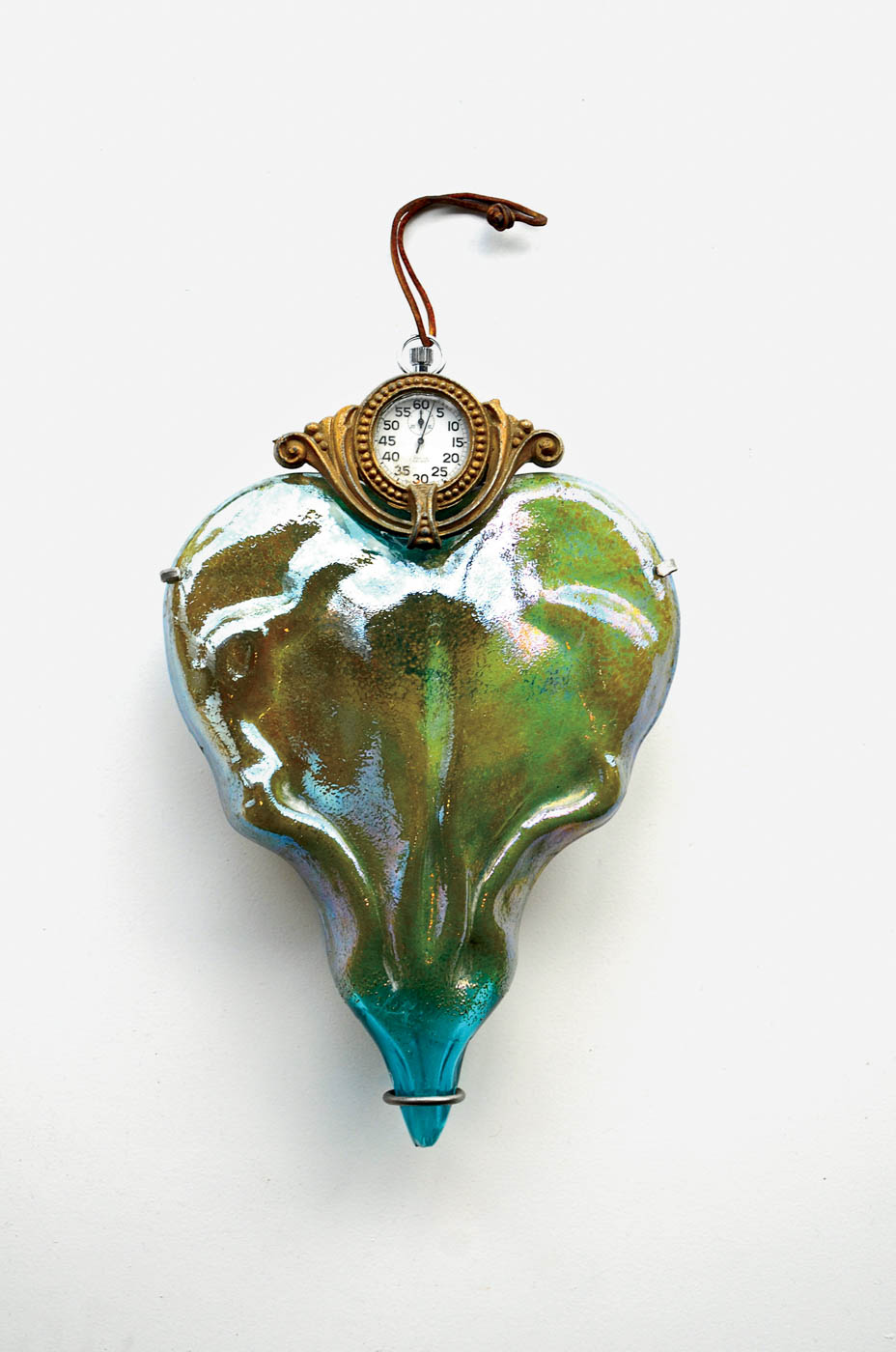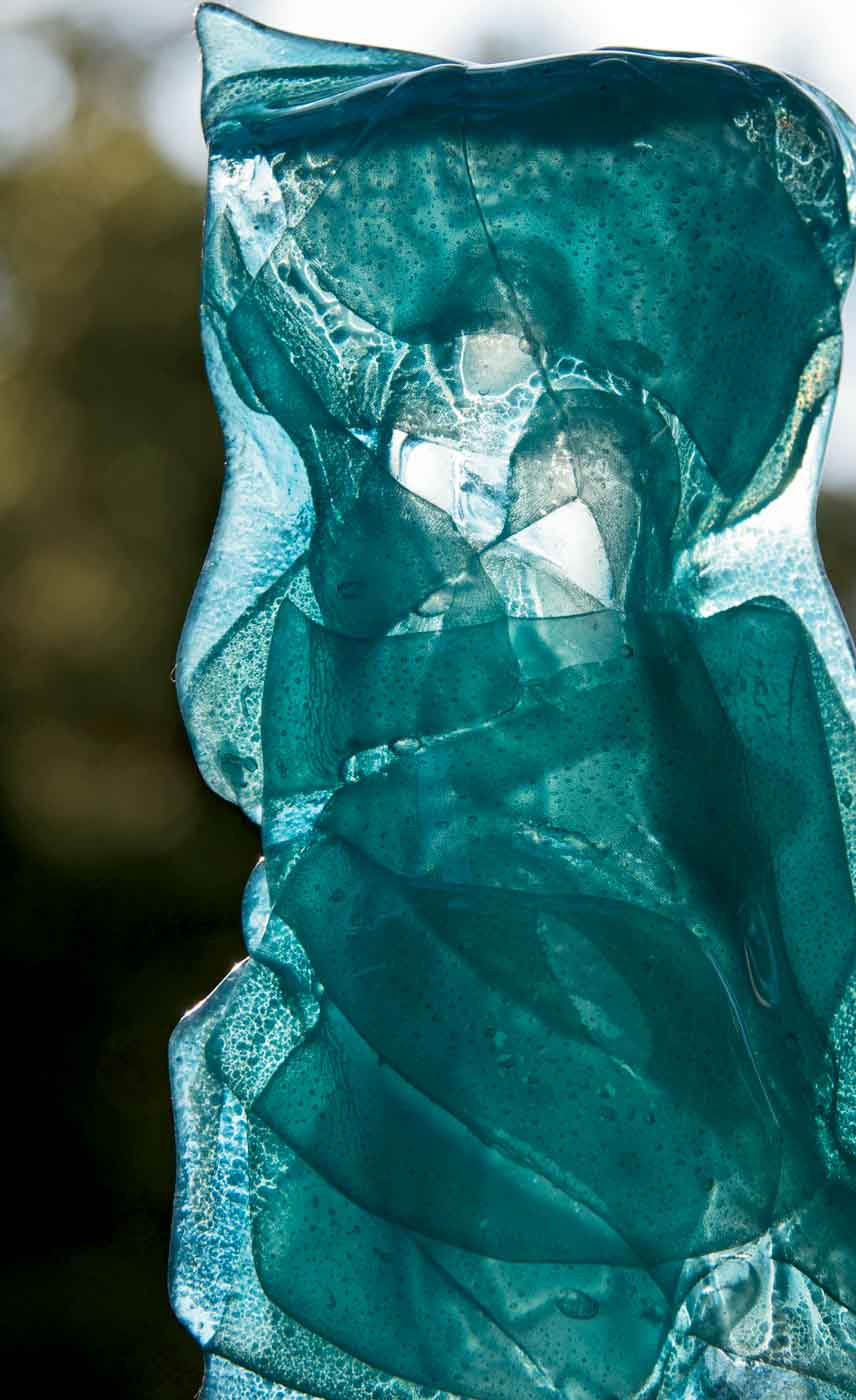LIFE, STILL
By Sherry Thomas
PHOTOGRAPHY BY JACK PERNO
STYLING BY THERESA DEMARIA
HAIR & MAKEUP BY CAMMY KELLY
Artist Diane Feldpausch Tang
By Sherry Thomas
PHOTOGRAPHY BY JACK PERNO
STYLING BY THERESA DEMARIA
HAIR & MAKEUP BY CAMMY KELLY
Artist Diane Feldpausch Tang

Thousands of humans living on the street without the food or support they needed to survive. Faced with the inhumanity of this scene, other people might keep walking, careful not to make eye contact. But that’s not how Lake Forest artist Diane Feldpausch Tang navigates this world.
Instead, she uses what she encountered on one California day as an opportunity to make a difference.
“I was visiting my daughter in San Francisco, and she lived in this brand-new high rise,” recalls Tang, who earned a BFA from The Art Institute of Chicago before starting a family in Lake Forest. “You could walk for a mile, and if I counted, I could come up on 2,000 homeless people in that area. It was astounding to me.”

Changed forever by what she had seen, Tang returned from California with a plan.
She began walking the streets of Chicago, camera in hand, looking for homeless people willing to sit for portraits—dipping into underpasses and back alleys to seek out America’s most fragile population, one that so many ignore.
“I ask their permission and pay them before I take their photographs,” explains Tang.
“My thought was, why not portrait paint these people and paint them so beautifully that I could sell the portraits and then donate that money to shelters.”
The project became such a labor of love that she began joining acquaintances who were also involved in helping the homeless community. Beyond capturing the portraits—a mission that extended from Chicago to Mexico City—she and partner Jack Perno rolled up their sleeves and did everything from distributing free masks at shelters during the pandemic to volunteering in the soup kitchen at Chicago’s Franciscan Outreach.
A meaningful connection had been made, one that inspired the theme of her one-woman show last spring at Chicago Sculpture International in Chicago’s Bucktown neighborhood. Titled Humanity + Modernity + Nature = Confusion, the exhibit featured portraits of the homeless along with sculpture and photography of urban blight in her hometown of Detroit.
“The homeless are the modern hunters and gatherers, shunned by artificial society,” she wrote of the March 2022 exhibit.
“One reason I created the show last year was to dig deeper, to explore why I make the art I create,” explains Tang, who hopes to mount a similar exhibition sometime this year. “When I got that show, I didn’t take a penny. I sold pieces and split the money between Franciscan Outreach and Chicago Coalition For The Homeless.”
Inspiring as it may be, this is merely one chapter in a journey that has taken the artist from 3-D work with materials such as glass, clay, metals, and found objects to gouache and oil painting, stoneware healing and memory vessels, glass-fused photography, blow-molded glass hearts, and black-and-white pinhole photography.
Tang credits her late grandmother for planting the seeds that helped her develop both compassion and creativity from a very young age. In the mid-2000s, her Detroit Series paid homage to this influence and an early childhood spent in urban Detroit.





“My grandmother heavily influenced me as a child and from 2011 to 2017, I did a series of work in Detroit,” she says, referring to a collection that captures mass urban decay through multimedia works, including fused and high-fired glass creations. “I wanted to go back and see her house so I talked one of my brothers into going with me. We went and the house had been torn down and there are only two houses left in a block of 30.”
Tang’s childhood memory of a beautiful little bungalow with gothic windows on a bungalow-lined street with an elm tree at its center, was replaced with the unthinkable sight in front of her.
“Everything was gone,” she says of the now blighted east side Detroit neighborhood. “It was a field. You could walk miles and miles … some structures were burnt out but there would be one or two houses every block.”
The little girl in her was devastated; the artist in her wanted to tell that story.
“Once I visited where my grandmother’s house once stood, I got in touch with someone to give me tours of abandoned buildings in Detroit,” she explains. “I’d sneak through broken windows and we’d go in and photograph.”
She found the stories in the ruins and brought them to life in her work.
“We’d go from floor to floor in these buildings and there would still be envelopes and coffee cups and stuff left from the ‘70s. I think what happened is people refused to pay their gas and electric bills so companies shut off the electricity and gas, the pipes froze, and destroyed it all,” says Tang. “Everything was left in time; it was surreal.”
“I would photograph the spaces but it didn’t quite feel the way it was when I was there,” she explains. “So, I took fused glass and manipulated the image with the glass to portray how it felt to me.”
If you notice a pattern in her work it may be because there is a pattern in the world—a repetitive cycle of casting out the old and unwanted for the new and shiny, of losing empathy not just for humans but for historical, once wonderful structures that supported a community.
In addition to her portraits of the homeless, some pieces from Detroit’s now-abandoned Fisher Body Plant were on display at last year’s show.
“The architect of that assembly plant used gorgeous turquoise window glass on some of the floors to keep the workers psychologically cool and calm,” says Tang. “I scavenged that and made a bas-relief sculpture out of it—to bring back pieces from the past and create something out of the repurposed glass.”
Detroit has long been in the rearview mirror for Tang, who first moved to Chicago in the ‘90s, and then to the North Shore. The mother of two daughters, Michelle and Mariel, Tang’s life today is set in a west Lake Forest home that backs up to Lake Forest Open Lands and Elawa Farm.

She is surrounded by woods, gardens, and nature, including a lively colony of bees that she considers some of her favorite collaborators.
As an empath, Tang admits she has always felt things on a deeper level than most, feeling even the planet’s laments on a level that is sometimes inexplicable. And yet, she is filled with gratitude— so much that she has established the Diane Feldpausch Tang Charitable Gift Fund, a nonprofit that aims to “support the welfare of people in need of humane aid and assistance.”
“My financial planner and I were just talking, and I told him that I want to give back to society,” she says. “I’m very blessed with what I have. I give to my charity but I also give my daughters a certain amount of money each year to donate to a charitable organization … so they’ve learned to give back to society, too.”
As for what’s next, it’s likely that Tang will proceed as she has since those early days in Detroit—with her eyes on those who are often unseen, and a camera ready to capture moments in time that no one should ever forget.
For more information, visit dianetangfeldpausch.com.
Sign Up for the JWC Media Email